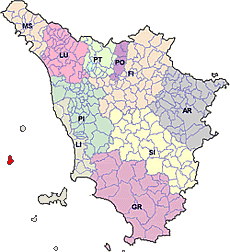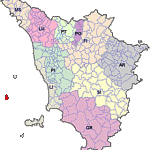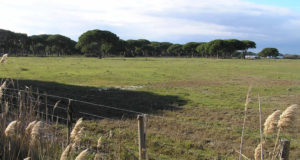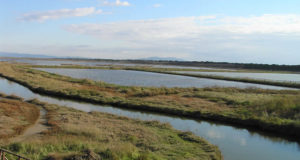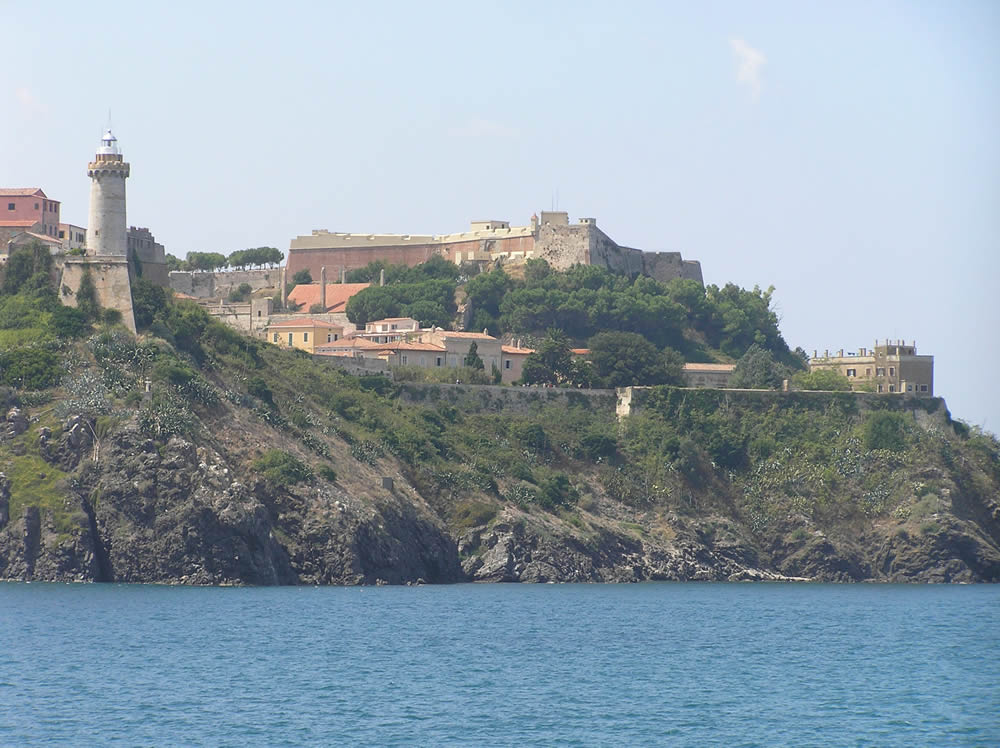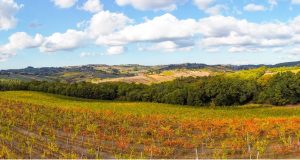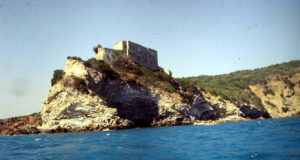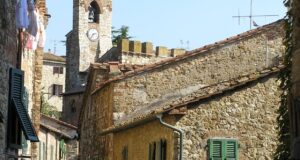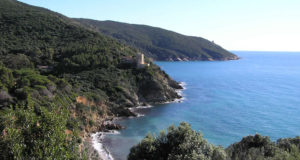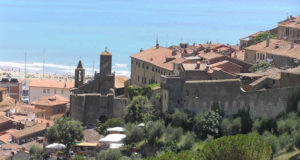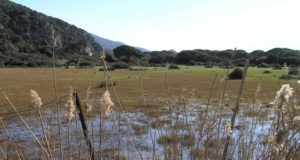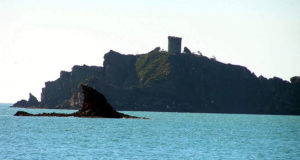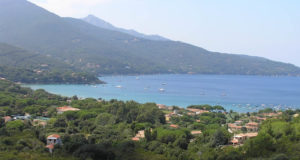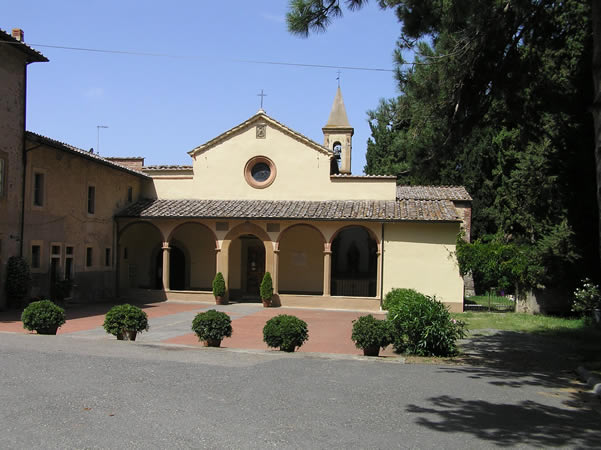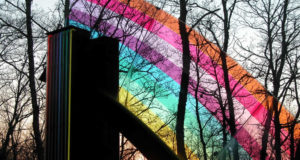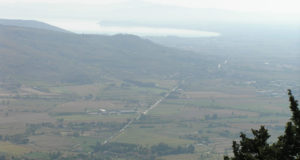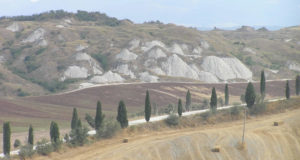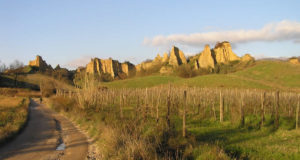The island of Capraia is located about 64 km from Livorno, 42 km from the island of Elba, 37 km from the island of Gorgona and 31 km from Corsica. The island has 355 inhabitants (2007) and an area of 19.30 km ² its coastline is an extension of 27 km.
Capraia is an island of volcanic origin and is formed by a mountain range that reaches 447 meters with the Monte Castello. The special climatic conditions allow the visit of the island at any time of year, but the best time to visit is in spring (April-May) when the island is full of wild flowers. The island is a paradise for walkers.
Capraia together with the islands of Gorgona, Pianosa, Elba, Giglio, Montecristo and Giannutri is part of the Tuscan Archipelago National Park. The island is accessible by ferries that depart from the port of Livorno, some even calling the island of Gorgona, we suggest to take one of these so you can admire from the sea also Gorgona, an island otherwise difficult to reach.
THE HISTORY OF THE ISLAND
According to the tradition handed down by Pliny, the Greeks were the first to land in Capraia. They gave it the name of Aegylon, that is the land of goats (another possible origin of the name is from the Etruscan word “Carpa” ie island of stones). A first ancient settlement was located in the area currently occupied by the village in the vicinity of the fort of San Giorgio.
Around the tenth or eleventh century B.C. the small settlement was moved inland in a place called “La Piana”. Successive arrived on the island, the Phoenicians, Etruscans and Romans. Some remains found on the island of these early settlements are kept in the tower located in the port of Capraia. From the second century B.C. the island comes under Roman control and later became a resort area, this is testified by the remains of a Roman villa found near the port (where is the church of the Assumption). During the Roman period the main settlement remained in “La Piana”.
THE MIDDLE AGES
After the fall of the Roman Empire the island was left deserted, then, in the early centuries of Christianity was often used as a hermitage, the monks introduced the cultivation of the grapes, the wine was then extracted through the crushing of grapes in stone basins the “millstones”, traces of which are visible in the locality of Reganico (south of the village). It seems that during the Middle Ages the island was heavily populated and the main settlement was always the one of the “La Piana”. Capraia was later sacked by the Saracens, in 803, and remained uninhabited for about 200 years.
After the year 1000 it was occupied from Pisa who kept it until 1403, from this year it became the possession of the Genoese family of Simone de Mari. In 1507 it was under the administration of the Republic of Genoa, and in 1540 Capraia was attacked and plundered by the pirate Dragut who deported the inhabitants into slavery, fortunately for the inhabitants a few days after the pirate was defeated by Giannettino Doria and the people freed.
After this event, the Genoese rebuilt the fort of San Giorgio and the Zenobito and Port towers. In 1767 the island was conquered by Pasquale Paoli, but when Corsica was sold to France, Capraia was returned to Genoa. After the Congress of Vienna it became part of the Kingdom of Sardinia. With the unification of Italy, since 1873, one third of the island was used as an agricultural penal colony, to which access was forbidden to the rest of the population. Capraia until 1925 was part of the province of Genoa.
AN INTACT ISLAND
Because of his past as a penal colony, the island remains almost intact. In 1986 the penal colony, which then took up almost two thirds of the island was closed. The small port is connected with the village by the only paved road on the island of Capraia. The village, which is dominated by the fortress of San Giorgio, still retains its original character, the Fortress of San Giorgio, solemn and majestic, overlooking the town of Capraia, but unfortunately can not be visited because it is subject to collapse, the first fortification was built by Pisa in the twelfth century, then, in the sixteenth century the Genoese rebuilt it in its present form visible.
Other places of historical or cultural interest are the church of the Assumption (Assunzione), the church of San Nicola and the chuech of Sacred Heart of Jesus (Sacro Cuore di Gesù), the church and the Franciscan Monastery of Sant’Antonio (built in 1662), the Church of Santo Stefano alla Piana, the Tower of Zenobito (built in 1516), the Tower of Teja (or Torre della Regina) and Torre del Porto that is located at the port of Capraia, and was built by the Genoese for defense purposes it is still in good condition.
TREKKING IN THE ISLAND OF CAPRAIA: ITINERARY VILLAGE-STAGNONE-MONTE LE PENNE
The island of Capraia is a paradise for walkers. When we were in Capraia, we embarked upon the journey that starts from the village, and along a beautiful medieval road, arrive at the old church of Santo Stefano (XI century), and then proceed along the path we reached a very scenic point on the west coast, from here the view opened onto Cala del Fondo and Punta del Fondo, in front of us are the mountains of Corsica.
Before the vantage point a meadow of daisies bloom gave us welcome (it was May). After a break we went to the pond called the “Stagnone” and then to the summit of Monte delle Penne (420 meters) with a view that dominates almost the entire island. “Stagnone” is a small lake located 321 meters above sea level, it is a natural basin of fresh water that has an area of 5000 square meters and a depth of less than one meter.
The walk is very beautiful, if done in the spring, because the island is in bloom. The distance covered can be done in 2-4 hours. I recommend to bring plenty of water and a hat, because if it’s a beautiful day the sun beats down and there are not many shady places during the journey.
BOAT TRIP AROUND THE ISLAND OF CAPRAIA
One of the most beautiful trips to do in Capraia is around the island on a boat of a fisherman. This is a really nice and interesting trip and I recommend to do. The tour starts from the port of Capraia, passes near the Fort of San Giorgio and the Torre del Bagno and then continuing along the east coast, comes to the beautiful Cala Rossa and the Tower of Zenobito the southernmost tip of the island.
From there the boat goes up the wild west coast with steep cliffs with nesting gulls and other seabirds, this part of the island is the undisputed realm of the seagulls. The tour reaches the far northern end of the island where is another watch tower, the Torre della Teja or della Regina. Continuing south along the east coast you reach the port again.
The route described here is accomplished in about 2 hours.
HOW TO REACH THE ISLAND OF CAPRAIA
The only passenger ferries that connect the island of Capraia depart from the port of Livorno and are operated by Toremar. The time spent in the crossing between Livorno and the island of Capraia varies between 2 hours and 45 minutes and 3 hours and 30 minutes.
BIBLIOGRAPHY
- AA. VV. “Toscana” Guide Rosse Touring Club Italiano, 2007
- Barsotti Gianfranco “Nuova guida Isola di Capraia. Natura, storia, escursioni via terra e via mare, indicazioni turistiche” 2012, Pacini Editore
- Brizi Fausto “Alfredo D’Andrade e il castello San Giorgio di Capraia. Uno dei più interessanti esempi di fortezze marittime del nostro mare” 2010, ERGA
- Muscari Paola; Cunico Mariapia “Arcipelago nascosto. Giardini, aranceti, carceri, torri e fortezze delle isole dell’arcipelago toscano” 2012, Olschki
- AA. VV. “Isola d’Elba e arcipelago toscano. Guida social” 2012, Touring
- Quilici Folco; Tamagnini Luca “Arcipelago toscano parco nazionale” 2002, Photoatlante
- AA. VV. “Isola d’Elba e arcipelago toscano” 2002, De Agostini
 Borghi di Toscana Guida ai borghi e ai paesaggi della Toscana
Borghi di Toscana Guida ai borghi e ai paesaggi della Toscana
